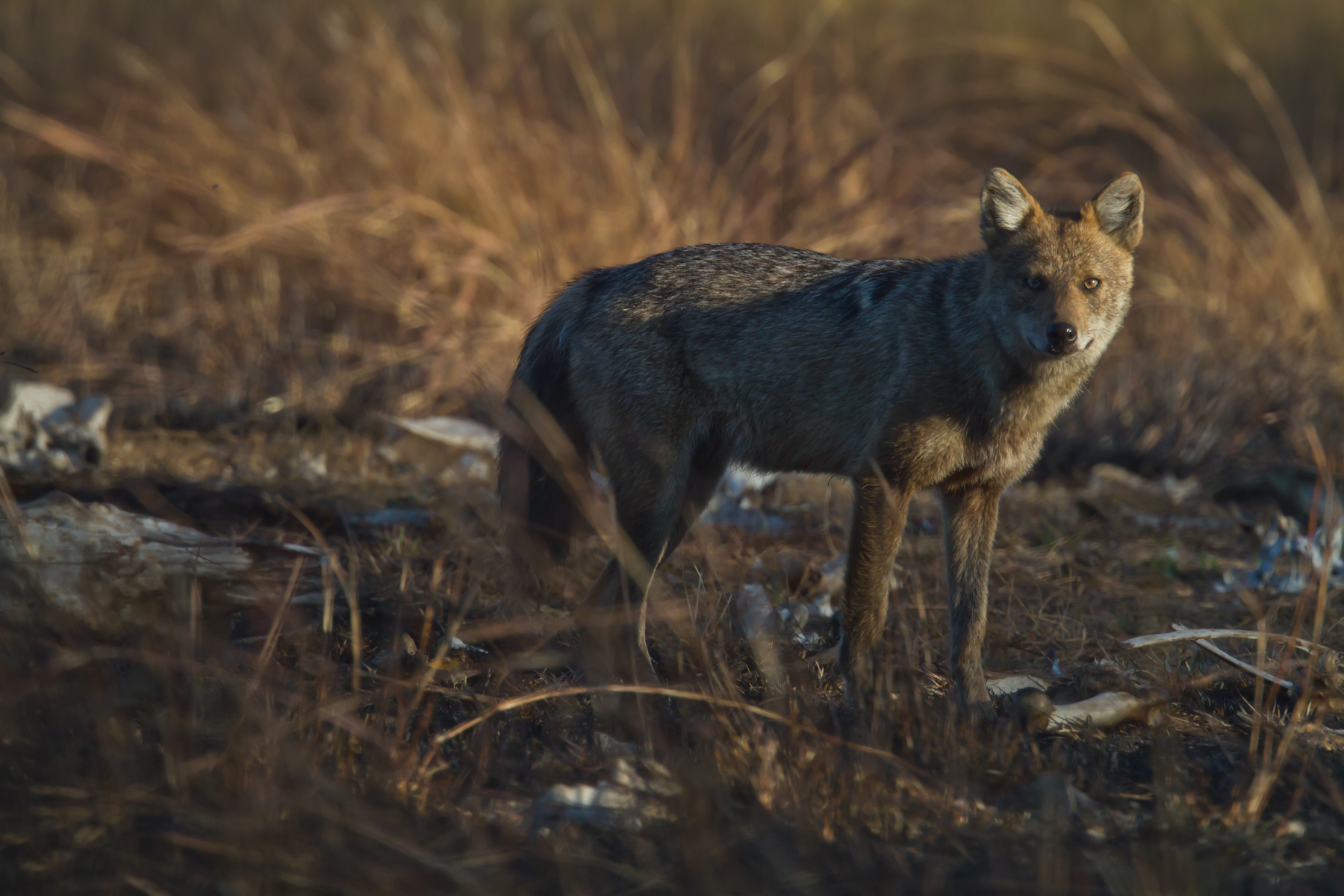News
Jackals exhibit unique behaviours to survive in an extreme environment
Golden jackals (Canis aureus), hereafter jackals, have a wide distribution, ranging from central Europe to Southeast Asia. Jackals are very adaptive to human-altered landscapes, and consequently have been expanding their range throughout Europe during the past several decades. However, the ecological role of jackals in natural ecosystems has not been well studied, and there have been no ecological studies of this species at the extreme eastern edge of their distribution in Southeast Asia.
A WildCRU project, led by Dr. Jan Kamler and assisted by other WildCRU members including Susana Rostro-García and Chanratana Pin, focused on the ecology of jackals in a seasonally dry deciduous forest (DDF) with no human settlements in Cambodia, which is at the eastern edge of their distribution. The seasonally dry DDF of Cambodia has a harsh dry season during which annual fires burn the grassy understory, and greater than 90% of the streams and waterholes dry up. Consequently, numbers of small vertebrates drastically decrease, because small reptiles to go into aestivation, and terrestrial small rodents exhibit annual population crashes. The jackal diet during the dry season has never been studied, so it is not known how jackals survive the extreme seasonally changes habitat, water availability, and prey numbers.
For our study, we captured 6 adult resident jackals (3 female, 3 male) and placed radio or GPS collars on them to monitor their daily movements, and determine home range sizes and habitat selection. We also collected 147 jackal scats during the dry season and dissected them in a laboratory to determine prey remains. We used results of ungulate surveys carried out by WWF Cambodia to determine the prey selection by jackals, and compared dietary results to concurrent studies on leopards and dholes to determine if jackals were scavenging from kills of larger carnivores. Finally, we also used long-term data from camera-trap surveys to determine if jackals were spatially avoiding large carnivores.
Results showed that the mean (±SE) annual size of home-range ranges (47.1 ± 2.5 km2), was considerably larger than that previously reported for any jackal species, resulting in an extremely low density (0.01 jackal/km2). Jackal home ranges were situated only in areas not occupied by leopards (Panthera pardus) and dholes (Cuon alpinus), suggesting jackals were spatially avoiding large carnivores. Jackals avoided dense forests and streams, and had a strong selection for dirt roads, possibly to avoid larger predators. In summary, it appeared that jackals had to balance habitat that was low in prey with avoidance of large carnivores, resulting in extremely large home ranges and overall low density.
Overall the jackal diet was diverse, with at least 16 prey items identified. The main food items consumed by jackals were processional termites (Hospitalitermes spp.; 26% biomass consumed), followed by wild pig (Sus scrofa; 20%), muntjac (Muntiacus vaginalis; 20%), and civets (17%). In contrast to other studies, jackals in DDF consumed relatively low amounts of small rodents and hares, probably because of the relatively low numbers of these prey species during the dry season in DDF. In contrast, no other Canis population in the world was found to consume such a high amount of termites, or to have a small insect as the most important prey item, suggesting the consumption of termites in DDF is an adaptive response by jackals to seasonal decreases in small vertebrate prey. Ungulates also comprised a relatively high proportion (41%) of the jackal diet, suggesting jackals in this population were predating on small ungulates more than in other jackal populations. Furthermore, civets comprised 22% of the jackal diet, which was surprising given that small carnivores were never found to be common prey items in other jackal populations. This suggests that in response to decreases in small vertebrate prey during the dry season in DDF, jackals predated more on small ungulates and smaller carnivores in order to survive.
Compared to the available prey biomass, jackals were not random in their consumption of ungulates because muntjac were selectively consumed over larger ungulate species, indicating jackals selectively preyed on the smallest ungulate species in the ecosystem. Dietary overlap with dholes and leopards was relatively low, and consumption patterns indicated jackals were predating on ungulates instead of scavenging from kills of larger carnivores, probably so jackals could avoid be predated on by leopards and dholes (large carnivores are known to kill jackals).
Our results showed that the jackal is an extremely adaptable and opportunistic species that exhibits several unique behaviours to survive in an extreme environment near the edge of their distribution.
Kamler, J.F., Minge, C., Rostro-García, S., Gharajehdaghipour, T., Crouthers, R., In, V., Pay, C., Pin, C., Sovanna, P., & Macdonald, D.W. (2021). Home range, habitat selection, density, and diet of golden jackals in the Eastern Plains Landscape, Cambodia. Journal of Mammalogy 102:636-650.
-
 ©Eleanor Briggs & WCS
©Eleanor Briggs & WCS





